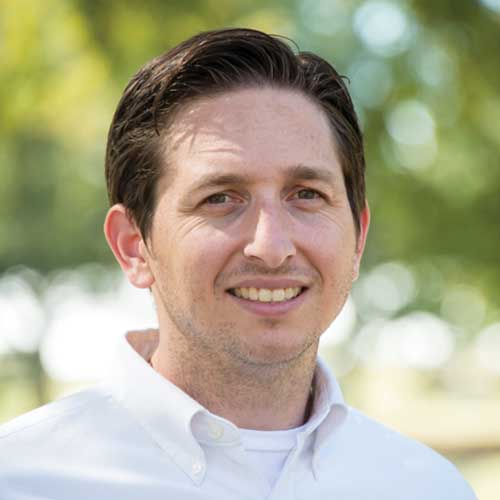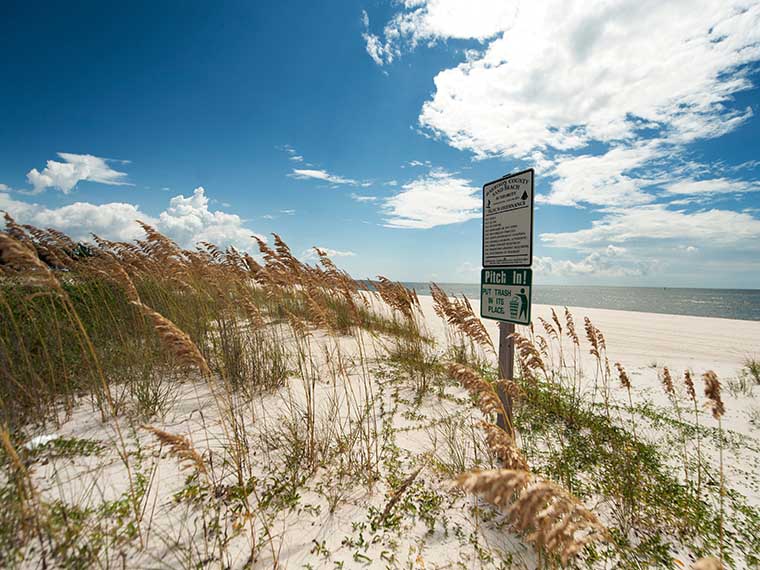The information presented on this page may be dated. It may refer to situations which have changed or people who are no longer affiliated with the university. It is archived as part of Mississippi State University's history.
Louisiana native, Dr. Dan Petrolia, has always had a love of the coast. That's why, when an opportunity to work on the Mississippi Gulf Coast arose, the agricultural economics professor steered the ship in that direction.
Previously, Petrolia, who is a scientist in the Mississippi Agricultural and Forestry Experiment Station, called Starkville home for nearly 10 years. Now he splits his time between the John C. Stennis Space Center, on the banks of the Pearl River in South Mississippi, and the land-grant's main campus. He and his family reside near the coast.
"I've always had an affinity for all things coastal. My wife and kids are the same way. We love being around the water, going to the beach, and eating seafood," he said.
When it comes to choosing a research topic, Petrolia flows with the tide. On any given day, that can mean studying anything from flood and wind insurance to the oyster industry to offshore sand used in coastal restoration projects. Currently, he is working to quantify the economic viability of certain coastal nourishment projects. Partnering with researchers at Louisiana State University and the University of New Orleans, he is comparing the economic cost of using sand from the outer continental shelf versus nearshore sand in coastal restoration projects.
"Loss of sand from the nation's beaches, dunes, and barrier islands is a serious problem that affects both the coastal environment and the economy. In order to address this need, beach nourishment, shore protection, and wetlands restoration projects are becoming increasingly routine," Petrolia said.
The project is funded by the Bureau of Ocean Energy Management, or BOEM, a federal agency that manages offshore minerals and resources including oil, gas, and sand. According to its website, BOEM has authorized more than 139 million cubic yards of outer continental shelf, or OCS, material for 52 coastal restoration projects in eight states to restore more than 303 miles of the nation's coastline.
Petrolia said OCS sand is much harder to acquire and the project he's working on hopes to figure out if that extra work is worth the effort. Currently, OCS sand requires traveling 25 miles offshore to harvest from shoals in deeper water using more expensive equipment.
"We're trying to figure out if it pays to go after the higher grain size sand that's harder to come by for coastal restoration, or if it makes sense to use nearshore sand, which is muddier, has a lower grain size, and is available in lower quantities," Petrolia said.
The team is simulating how barrier islands under different scenarios of sand restoration perform against different weather scenarios overtime.
"After we see how these islands morph over time, we try to figure out if using sand from the outer continental shelf is worth the extra effort," Petrolia said.
Petrolia said preliminary data suggests it might be.
"While there are plenty of variables to consider, we are finding, in a lot of cases, it does makes sense to go offshore to get sand because it stays in place longer, so you get more benefits from it longer," he said."
Loss of sand from the nation's beaches, dunes, and barrier islands is a serious problem that affects both the coastal environment and the economy. In order to address this need, beach nourishment, shore protection, and wetlands restoration projects are becoming increasingly routine.
Dr. Dan Petrolia
Behind the Science

Dan Petrolia
Professor
Education: B.A., Political Science, B.S., Poultry Science, M.S., Agricultural Economics, Louisiana State University; Ph.D., Agricultural and Applied Economics, University of Minnesota
Years At MSU: 14
Focus: Economics of coastal resources, natural hazards, and consumer choice
Passion At Work: Conducting interesting, applied research; and helping students learn how to think, not what to think.

